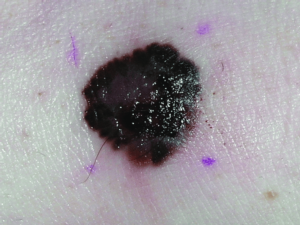
Have you ever looked in the mirror and wondered if those scars could ever disappear?
Scars are a natural part of the healing process, but that doesn’t mean you have to live with them forever. Thanks to advances in medical science, there are now effective treatments that can significantly improve the appearance of scars and restore your confidence.
In this article, we’ll demystify common myths about scars and explain the science-backed options available to help you reduce or transform your scars for smoother, healthier-looking skin.
Understanding Scars: Why Do They Form?
When your skin is injured, your body begins a complex healing process to repair the damage. This process involves:
- Collagen production: Your skin forms new collagen fibres to close the wound.
- Scar tissue formation: Unlike normal skin, scar tissue is made of dense collagen that can look and feel different.
- Types of scars: Depending on how your skin heals, scars can take various forms:
- Hypertrophic scars: Raised, red scars that stay within the wound boundaries.
- Atrophic scars: Depressed or sunken scars, often seen in acne or chickenpox.
- Keloid scars: Thick, raised scars that extend beyond the injury site.
- Contracture scars: Tight scars that can restrict movement, common after burns.
- Acne scars: Can be a mix of atrophic and hypertrophic types.
- Why scars look different on everyone: Genetics, skin type, wound care, and the injury’s severity all influence scar appearance.
Can Scars Be Completely Removed?
The short answer is: no. Scars are a natural part of the skin’s healing process, and while they rarely disappear entirely, many treatments exist that can dramatically reduce their appearance and improve skin texture. It’s important to have realistic expectations. Treatments aim to make scars less noticeable rather than erase them completely.

Topical Treatments: What Works and What Doesn’t
Many people start with topical products to improve scars. Some commonly used options include:
- Silicone gels and sheets: Widely recommended for preventing and softening scars by hydrating the skin and regulating collagen production.
- Steroid creams or injections: Useful for reducing raised, hypertrophic, or keloid scars by decreasing inflammation and collagen formation.
- Vitamin E and onion extract: Popular, but with limited scientific evidence supporting their effectiveness.
- Other creams: Some products claim to reduce scars but often lack rigorous clinical validation.
While topical treatments can be helpful, especially for newer or minor scars, they have limitations and usually cannot address deeper or more severe scars.
Medical and Procedural Options to Reduce Scars
For more significant scar improvement, medical and procedural treatments are often necessary. These include:
- Laser therapies: Such as the UltraPulse CO₂ laser, fractional lasers, and pulsed dye lasers. These work by resurfacing the skin, stimulating collagen remodelling, and improving scar texture and colour.
- Microneedling: Creates controlled micro-injuries that promote collagen production and skin regeneration, effective for atrophic and acne scars.
- Chemical peels: Remove damaged outer skin layers to improve texture and pigmentation.
- Steroid injections: Reduce raised scars by softening tissue and limiting collagen overproduction.
- Surgical revision: Involves excising or repositioning scar tissue, often combined with other treatments to minimise recurrence.

Why Laser Treatments Are the Most Effective Way to Reduce Scars
When it comes to reducing the appearance of scars, laser therapies stand out as the most effective and versatile treatment option available today. Unlike topical creams or injections that have limited impact on deeper scar tissue, lasers work by directly targeting scar structure and stimulating the skin’s natural healing processes.
How Laser Treatments Work
Laser scar revision uses focused light energy to penetrate scar tissue, promoting collagen remodelling and skin regeneration. This process helps replace thick, fibrotic scar tissue with smoother, more elastic skin. Different laser types are tailored to specific scar characteristics:
- Fractional Ablative Lasers (CO₂, Er:YAG): These lasers create microscopic columns of thermal injury deep within the scar, removing damaged tissue and stimulating new collagen growth. They are highly effective for atrophic scars (such as acne scars), surgical scars, and traumatic scars, providing significant texture and colour improvement. Although they require some downtime (typically 4–10 days), the results are often dramatic.
- Nonablative Lasers (Pulsed Dye Laser, Nd:YAG, Diode): These penetrate without removing skin layers, improving scar redness, thickness, and pliability with minimal downtime. Pulsed Dye Laser (PDL) is particularly effective for hypertrophic and keloid scars, reducing redness and scar height.
- Fractional Nonablative Lasers: Offer a balance of efficacy and minimal downtime, improving pigmentation and thickness in various scar types.
Why Lasers Are Superior to Other Treatments
- Precision Targeting: Lasers can be customised to treat only scarred areas, sparing healthy skin and reducing side effects.
- Versatility: Effective on a wide range of scars-including acne, burn, surgical, and contracture scars-lasers offer tailored solutions for each scar type.
- Collagen Remodelling: By stimulating the body’s natural collagen production, lasers improve not just scar appearance but overall skin quality, elasticity, and texture.
- Early Intervention: Studies show that starting laser treatment within one month of surgery or injury can minimise scar formation and improve long-term outcomes.
- Minimal Downtime: Advances like fractional laser technology allow faster healing compared to older fully ablative lasers. Patients often return to daily activities within days.
Supporting Evidence
- A 2025 systematic review confirms that laser treatments significantly reduce surgical scar visibility, especially when applied early (<1 month post-op).
- Clinical studies report 57% to 83% improvement in hypertrophic scars after Pulsed Dye Laser treatment.
- Fractional CO₂ laser therapy has shown 70% improvement in atrophic traumatic scars after multiple sessions.
- Patient satisfaction rates are high, with many preferring fractional laser treatments due to better results and tolerability.
The Role of Early Treatment and Prevention
Have you ever wondered why some scars fade better than others? One of the most important factors in achieving optimal scar outcomes is starting treatment early-ideally within the first few weeks after injury or surgery.
Why Starting Treatment Early Improves Outcomes
- Supports natural healing: The skin’s collagen production peaks during the first few weeks post-injury, making this a critical window to influence scar formation positively.
- Reduces scar thickness and redness: Early intervention helps balance collagen synthesis, preventing excessive scar tissue and discolouration.
- Prevents complications: Prompt care reduces inflammation and infection risks, which can worsen scarring.
- Improves long-term appearance: Scars treated early tend to be smaller, flatter, and blend more naturally with surrounding skin.
- Speeds up recovery: Treatments like silicone gels and laser therapy accelerate healing, reducing downtime and discomfort.
- Enhances emotional well-being: Early improvements in scar appearance can boost confidence and reduce psychological distress.
Clinical studies consistently show that laser treatments initiated within weeks of wound closure can significantly reduce scar formation and improve texture and colour
Tips for Wound Care to Minimise Scarring
Proper wound care is the foundation for preventing prominent scars:
- Keep the wound clean and moist: Use gentle cleansing and apply appropriate ointments to support healing.
- Avoid picking or scratching: This can cause inflammation and worsen scarring.
- Use silicone sheets or gels: These hydrate the scar and regulate collagen, reducing hypertrophic or keloid scars.
- Protect from sun exposure: UV rays can darken scars and impair healing- apply broad-spectrum sunscreen (SPF 30+) daily.
- Follow your healthcare provider’s instructions: Timely dressing changes and monitoring for infection are crucial.
Lifestyle and Skincare Tips to Support Scar Healing
Supporting your skin’s health can enhance scar improvement:
- Sun protection: Always use sunscreen and cover scars when outdoors to prevent hyperpigmentation.
- Stay hydrated: Well-hydrated skin heals better and maintains elasticity.
- Balanced nutrition: Foods rich in vitamins C, E, zinc, and protein support collagen synthesis and repair.
- Avoid irritants: Harsh skincare products or excessive exfoliation can delay healing.
- Manage stress and get adequate sleep: Both are vital for optimal skin regeneration.
When to See a Specialist
Not all scars respond to home care or over-the-counter treatments. You should seek professional assessment if you notice:
- Scars that are raised, thickened, or painful (possible hypertrophic or keloid scars).
- Scars causing restricted movement (contractures).
- Scars that are discoloured, itchy, or worsening over time.
- Large or extensive scars affecting your confidence or quality of life.
Dermatologists personalise scar treatments based on scar type, age, location, and your skin’s unique characteristics. They can recommend advanced therapies such as laser treatments, microneedling, steroid injections, or surgical revision to optimise results.
Ready to Transform Your Scars?
At the Skin Care Network, our expert dermatologists specialise in the latest scar revision techniques, including advanced UltraPulse CO₂ laser therapy. We tailor treatments to your individual needs, helping you achieve smoother, healthier skin and renewed confidence.
Book a consultation today to start your journey toward scar improvement. Visit skincarenetwork.co.uk or contact us to schedule your appointment at our North London clinic.



